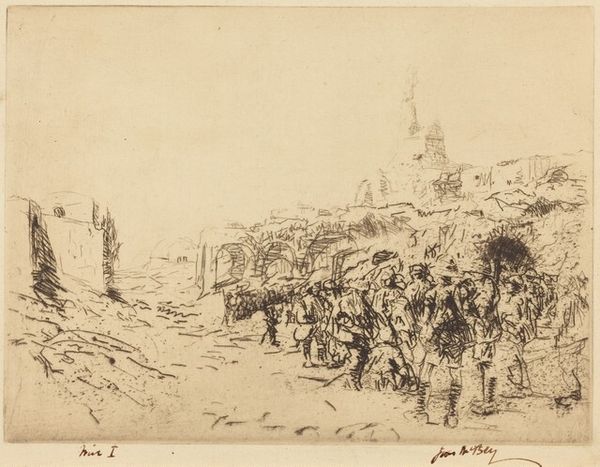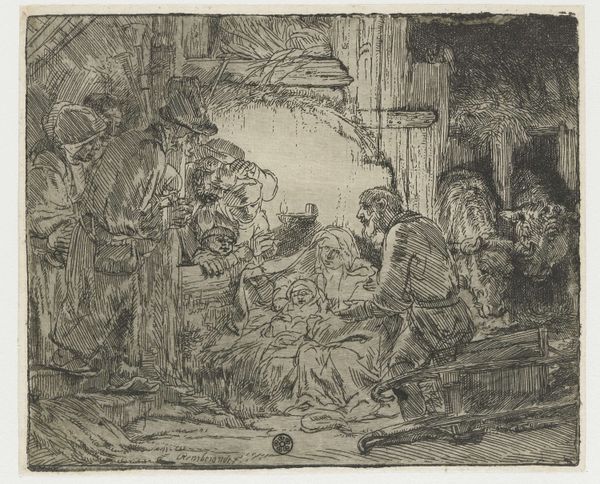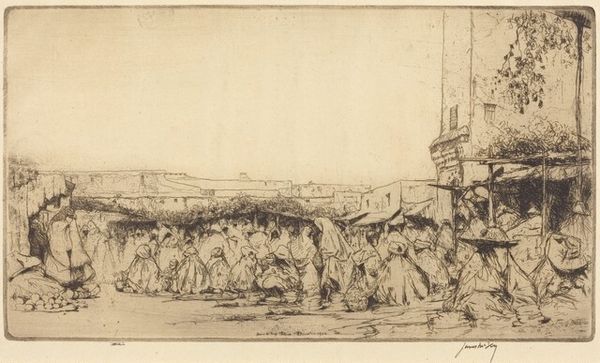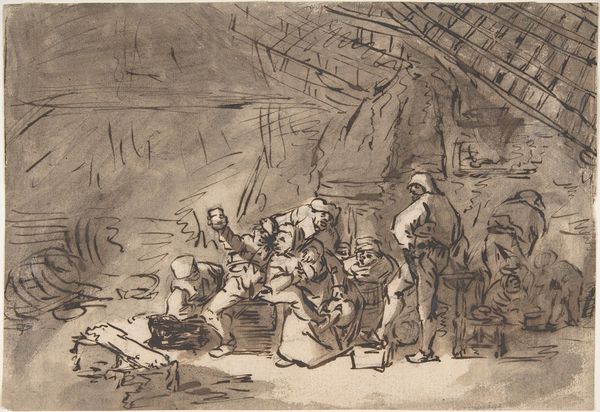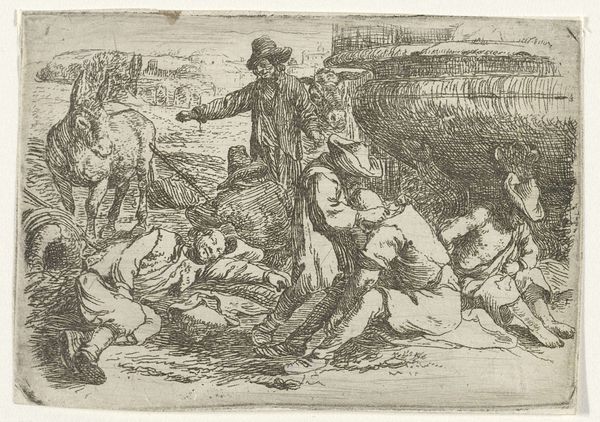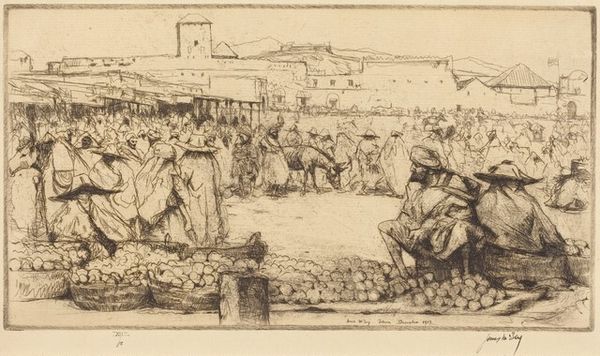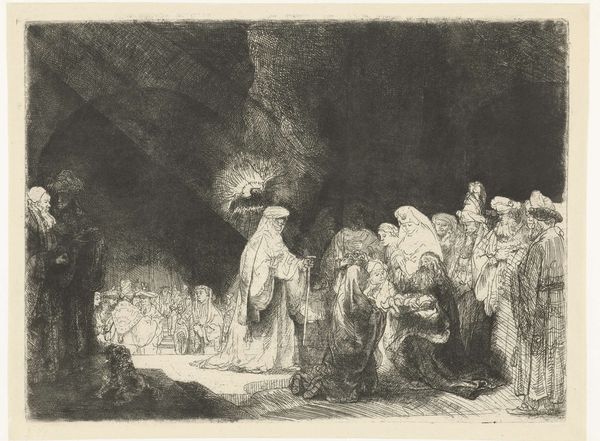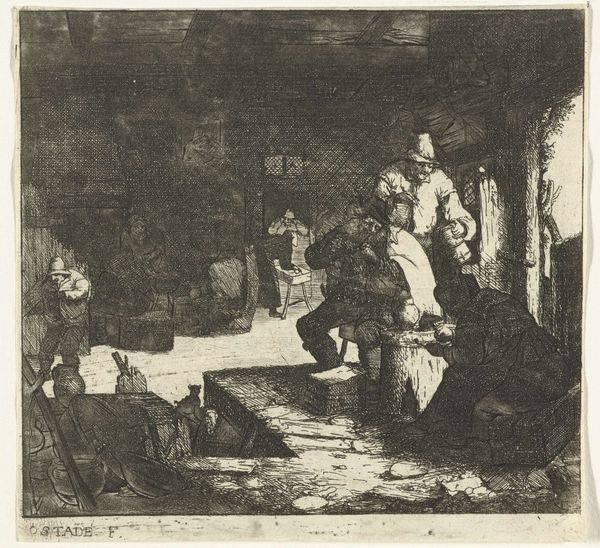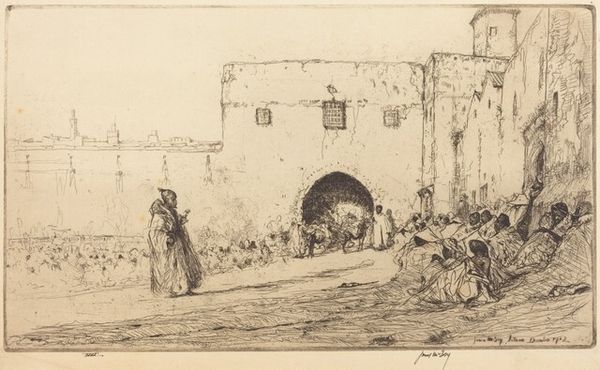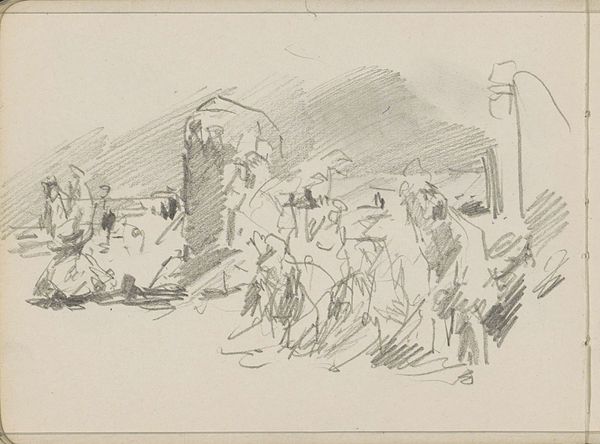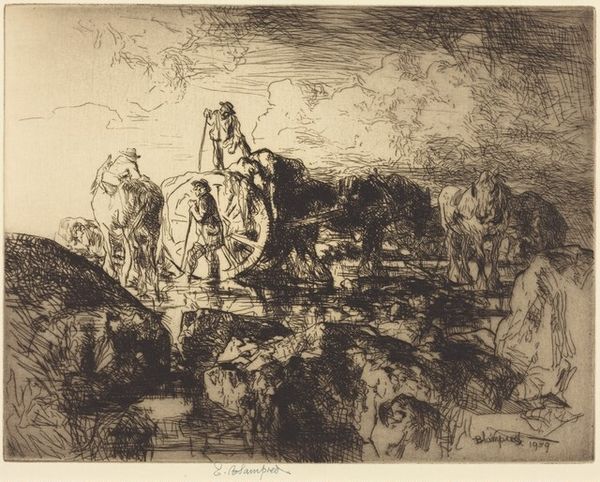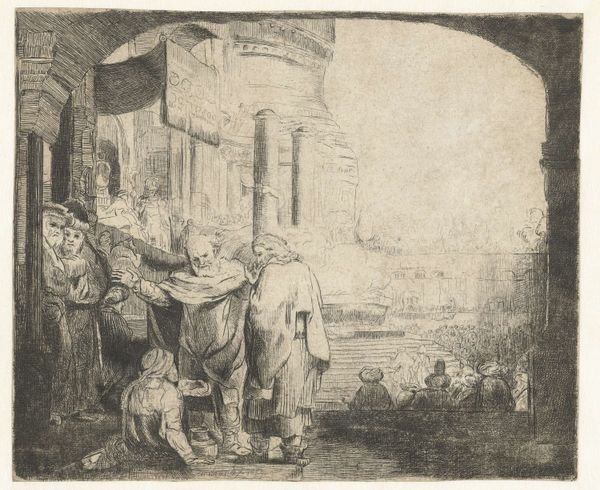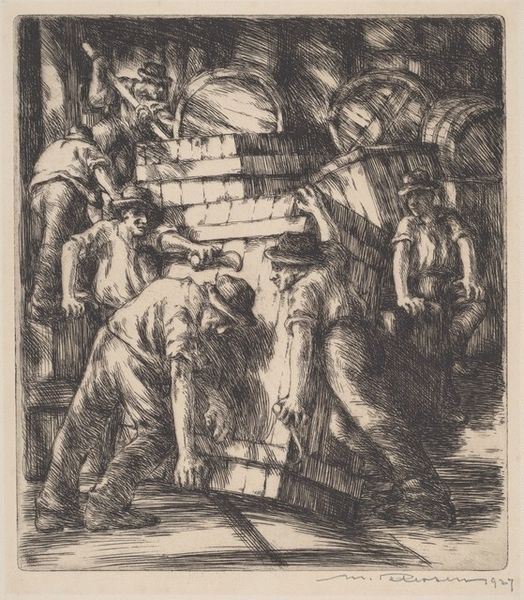
drawing, print, etching
#
drawing
#
ink drawing
# print
#
etching
#
landscape
#
figuration
#
orientalism
#
line
#
cityscape
#
islamic-art
Copyright: National Gallery of Art: CC0 1.0
Editor: This etching by James McBey, made in 1912, is called "The Jewish Quarter, Tetuan". It’s rendered in a delicate, almost scratchy style. What I immediately notice is the bustling scene framed by what seems to be a ruined archway. How would you interpret the social context behind this depiction? Curator: Well, Tetuan in 1912 was a city experiencing significant colonial influence, primarily from Spain. McBey’s choice to depict the Jewish Quarter raises questions about the gaze of the artist and the power dynamics inherent in representing a community under colonial rule. How do you think the ‘Orientalist’ style plays into this? Editor: I see the Orientalist style in the detailed rendering of the "exotic" locale and the focus on everyday life. But is McBey just documenting what he saw, or is he perpetuating stereotypes? Curator: That's the crucial question. On the one hand, such detailed depictions could foster a sense of understanding, potentially combating existing stereotypes simply by portraying ordinary life. On the other hand, it can also be argued that he's objectifying the community by focusing solely on the "picturesque," ignoring political complexities. Notice how the figures are somewhat anonymized. Is that an attempt to authentically show daily life or distance viewers from individual experiences? Editor: So the print could be seen as both informative and potentially problematic, depending on how it's contextualized. Curator: Precisely. Considering the period’s socio-political climate is key to understanding such imagery. Do we view it as evidence of the cultural fascination, or critique its colonial undertones? How are viewers expected to respond to the Jewish community and this Moroccan cityscape? These works can really inform our present day sensibilities of seeing ‘others’. Editor: It's fascinating to consider the historical lens and the possible motivations and implications behind McBey’s artistic choices here. Thanks, this gave me a lot to think about. Curator: My pleasure! Examining art within its historical context is always so enriching and can transform a piece completely.
Comments
No comments
Be the first to comment and join the conversation on the ultimate creative platform.
